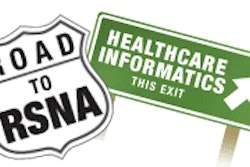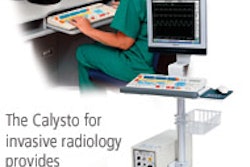DALLAS - As the healthcare industry moves toward enterprise-wide data integration, implementation of an electronic medical record (EMR) comprises a large portion of the effort. Tools, processes, and methodologies for EMR implementation are as important, if not more important, than the technology itself.
A study done at a 500-bed hospital in Denmark revealed the benefits of performing workflow analysis prior to EMR implementation. In an e-session presentation this week at the Healthcare Information and Management Systems Society (HIMSS) conference, researchers Pemille Bertelsen of Aalborg University in Aalborg, Denmark, and Inge Madsen and P. Hostrup of Aarhus University Hospital in Aarhus Denmark, revealed findings of their research collaboration.
“We see the current change from paper-based records to EMRs as a change from the use of one technology to another. The introduction of electronic devices is only a new technique that will never be successful without a simultaneous adjustment in two of the other three elements of technology,” the authors said, referring to the four constituents comprising technology: knowledge, organization, technique, and product.
The researchers had three mains goals for their work:
- Compare how clinicians used patient-record technology during rounds, before and after a full EMR was implemented at the hospital.
- Develop a workflow-analysis tool that could be used by EMR staff when discussing EMR implementation at other wards in the hospital
- Point out differences between medical and surgical wards in the use of paper-based medical records when the clinicians did rounds.
By examining the routine and daily practices of the institution, the researchers sought to focus staff attention on the future implementation of EMR, while also creating a sense of internal ownership over the EMR conversion process.
Among the initial challenges, researchers were confronted with the task of gaining acceptance among clinicians and increasing awareness of the benefits of EMR implementation.
The group analyzed a number of workflow processes, including undocumented and non-verbal routines of various staff. Data collection methods included interviews, observation, and visualization, as the research group attempted to distinguish between the clinicians’ actual use and reported use of paper records.
Clinicians at Skejby University Hospital, in Skejby, Denmark, were the initial subjects of the study, with a focus on how paper records were being used in the cardiology and thoracic surgery departments.
The results of the investigations showed that:
- Non-verbal communication was used extensively
- Old routines were maintained because of multipurpose objectives
- Artifacts were used in conjunction with paper records
- Clinicians were provided with patient information in preparatory meetings
- The EMR does not replace everything.
“Our findings were interesting regarding the future use of the electronic patient record in relation to whether they would change the way doctors communicated with patients, or whether it would be possible to bring the computers to the wards,” they said. “Each clinician had their own personal style for the use of paper records.”
The study also showed notable differences in the use of paper records in the surgical ward compared to their use in the medical ward.
Perhaps the most significant finding was the need to raise awareness among clinicians and department personnel for the necessity of workflow change. Communication, both verbal and non-verbal, was shown as a significant aspect requiring workflow-analysis attention, primarily with respect to future implementation of the EMR.
The authors stressed the importance for every department to perform its own workflow analysis in order to determine department-specific needs for workflow re-design, both prior to and following implementation of the EMR.
By Kris Knight
AuntMinnie.com contributing writer
February 18, 2005
Related Reading
IHE assists regional health architecture, February 15, 2005
Copyright © 2005 AuntMinnie.com



















